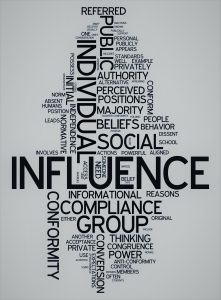Many people believe you must persuade the majority in order for change to occur. This is a myth. Instead, leaders should focus their efforts on a small but influential subgroup known as opinion leaders to get a new idea adopted.
[The post below is an excerpt from my book, Safety WALK Safety TALK ].
We accept change at different rates
Everett Rogers originally published his theory on the Diffusion of Innovations in 1962. It is a theory that seeks to explain how, why, and at what rate new ideas and technology spread through cultures. The book (now in its fifth edition) says diffusion is the process by which an innovation is communicated through certain channels over time among the members of a social system. The innovation or idea must be widely adopted in order to self-sustain.
In his book, Dr. Rogers tells a fascinating story of how he was prompted very early in his career to study how new ideas were adopted by the masses.
Immediately after graduating with a Ph.D. in sociology, Dr. Rogers accepted a job working with an agricultural extension service in Iowa. His primary responsibility was to work with the local farmers and encourage them to use newly developed varieties of corn which were proven in field tests to produce crops with higher yields, as well as being more disease-resistant. As a result, these strains of corn were more profitable than the current varieties.
Unfortunately, Dr. Rogers quickly learned he couldn’t connect with the farmers. He was a college-educated young man who had never plowed a field or planted corn. All his academic knowledge didn’t mean anything to the farmers. He lacked credibility.
He realized he needed to convince at least one farmer to try one of the new strains. That way, he reasoned, once this crop was proven to have higher yields, all the other farmers would follow suit and adopt the new innovation in corn seed.






 hange is hard. Leading others through change can be a daunting
hange is hard. Leading others through change can be a daunting